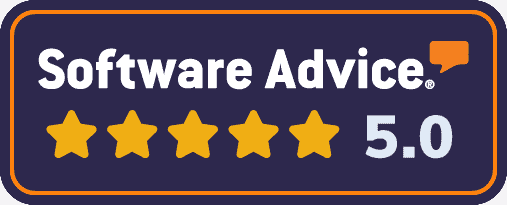Blog Index
1. Growth of EdTech in India
2. 2020 – The Year of Change
3. Difference between Technology and Companies
4. The Foreseeable Future & The Unlimited Opportunity
5. Beyond the Foreseeable Future
Education Technology (EdTech) is the future of education. 20 years ago, if you had told us that children, students, and learners in the 2020s can pursue education from their bedrooms, we would have probably laughed it off. But today, that’s the reality.
An excerpt from the Government of India’s National Education Policy 2020 sums it up perfectly:
“Particular attention will need to be paid to emerging disruptive technologies that will necessarily transform the education system. When 1986/1992 National Policy on Education was formulated, it was difficult to predict the disruptive effect that the internet would have brought.”
As of today, all schools, colleges, and institutions across India have started online education in one way or the other. Virtual classrooms are replacing physical classrooms. A lesson that could have taken hours of standing and multiple bars of chalk or loads of ink can now be taught innovatively in less than an hour.
With the Government’s Ministry of Human Resource Development (HRD) urging the need for online education, and creating its own online education platform SWAYAM, sends a clear message to every student and institution across India. The face of education as we know it is changing rapidly and the enforcer of that change is EdTech.

EdTech is here to stay and it’s here for the long haul.
Growth of EdTech in India
Though the early developments were slow, it did not take a long time before EdTech Startups changed the face of education. From the proof of concepts at the beginning of the 2010s to the phenomenal growth around 2015 – 2016, education technology and its torchbearers have taken the country by surprise.
As we all know, India is home to the largest EdTech startup in the world, BYJU. They have recently raised the highest amount of capital, at $969 million. And as a country, we have become the second-largest market for e-learning after the US.
By 2021, the EdTech startup sector is expected to reach US$ 1.96 billion with around 9.5 million users. Among those, test preparation and K-12 EdTech startups combined are estimated to be worth $1.3 Bn by 2021.
It’s important to remember that the above states are pre-covid calculations. During Covid and post covid, the EdTech industry has increased 10 times more. We will have to wait until the end of the fiscal year to find the real growth. However, from what we see on a daily basis, it’s definitely blown the rooftop of success.

2020 – The Year of Change
So as mentioned, the COVID-19 pandemic has boosted the growth of EdTech but it was eventually bound to happen. Just to state a fact, as of 2020, we have around 327 EdTech startups.
However, this year has seen some of the biggest changes in the education sector. With mergers, fundraisers, updates, and government declarations, there’s been no dearth of education news this year.
Let us state a few major incidents that took place this year, which prove how powerful EdTech is going to be in the upcoming years.
To start with, February 2020 has seen Unacademy, one of the largest EdTech companies in India, raise $110 million in Series E from Facebook and General Atlantic.
Followed by this investment came Univariety’s fundraising in March 2020. They received an investment of US$ 1.1 million from Info Edge.
As a proud moment for the latest initiatives, April 2020 saw SWAYAM’s six courses rank among the 30 best online courses of 2019 by Class Central. In May 2020, US$ 9 million in Series A funding was raised by the B2B (business-to-business) EdTech startupClassplus.
Also, In May 2020, the Government launched PM eVIDYA, a program for multi-mode access to digital/online education.
There are other initiatives waiting to be launched such as National Foundational Literacy and Numeracy Mission, New National Curriculum and Pedagogical framework, and Manodarpan.
(Stats mentioned as per India Brand Equity Foundation – ibef)
As you can see, 2020 has been the defining year for EdTech. With the backing of the government and foreign investors, India is going to raise in the education sector very shortly.
More importantly, this change is going to help students and learners from all parts of the country. A student from a remote town or village, who could not have gained a quality education, can now earn education & certifications from top universities, even global universities. UpGrad is one such EdTech company that’s making it happen.
Difference between Technology and Companies
Generally, when the word EdTech is taken, most people imagine BYJUs, Udemy, UpGrad or such companies/institutions. However, these are companies that are using the technology and they are not the technology itself. The technology is different.
The overall Education Technology is a mixture of web/mobile applications, smart devices, social networking platforms, automated tests & grading systems, integrated analytics, and much more.
EdTech companies make use of these latest technologies to deploy their content and curriculum. That’s why most people assume that EdTech refers to all the companies.
With that said, there are two technological trends that will define the future of education in the upcoming years. Let’s have a quick look.
Mobile-First Learning
Human beings today have become so dependent on mobiles. They may experience withdrawal symptoms if their mobiles are taken away, to express on a lighter note.
According to Gray Matters Capital, “An Indian mobile user typically spends 200 minutes per day on the internet on an average.” Of which, social media applications take 40% and the remaining 30% goes to entertainment applications.
However, this does not change the fact that mobile devices are used extensively for learning.
From 300 students who were interviewed during test preparation, it came to light that they used mobile applications along with classroom mentoring to prepare for competitive examinations. Over 85% of mobile users who prepare for competitive exams have confirmed that they are willing to pay INR 100-250 per month for applications that will help in coaching.
Considering these stats, it’s important that any organization entering the EdTech space should concentrate on making their applications mobile-first and mobile-friendly. Not only does it make consuming content easier but also improves the overall experience.
Experiential Learning
Once again, in the recent education report, the government is looking to adapt experiential learning at most levels of schooling. Of course, we all know that the school model is about to change from 10+2 to 5+3+3+4; where examinations are required in classes 5, 8, 10, and 12.
Also, coding will be introduced as part of the curriculum from grade 6. Another fantastic change mentioned is the availability of choice where a student can take multiple electives of their choice.
With that said, all these initiatives are backed by experiential learning. Because experience teaches us faster and leaves us with permanent remembrance of knowledge when compared to orthodox theoretical based study.
So, based on these new advancements, it is important that as a system we use technology to provide these experiences. Most EdTech companies have already started on this road and we may see multiple collaborations between EdTech startups& government.

The Foreseeable Future & The Unlimited Opportunity
India has over 500 million individuals between the ages of 5-24 years. Likewise, the education sector in India was estimated at US$ 91.7 billion in FY18 and is expected to reach US$ 101.1 billion in FY19.
This means there is a great opportunity for the education sector as well as EdTech to occupy. To complete this cake of opportunity with a beautiful topping, the Government allocated Rs 59,845 crore (US$ 8.56 billion) for the Department of School Education and Literacy in the union budget for 2020-21.
With many Chinese apps banned and a sea of opportunity ahead, it’s only a matter of time before EdTech companies start occupying.
Also, there are new technologies that will play a great role. Some of these are Artificial Intelligence, Machine Learning, Blockchain, Augmented Reality, and Virtual Reality. While AI, ML and Blockchain will facilitate automation and security of individuals, AR & VR will provide the experiential learning that is much required.
In fact, Blockchain has become part of the education system since 2017, starting with MIT. As of now, this technology is used in various countries for issuing educational credentials & certificates, verification, and creating identities. It has already created quite a demand across multiple industries and now entered education. TruScholar is one of the pioneers in India to establish blockchain-based credential verification.
As a move to secure the technological future and to compete with its western contemporaries, the union budget 2020-2021 has proposed US $439.55 million (INR 3,000 crore) as part of Revitalizing Infrastructure and Systems in Education (RISE).
Now, there will be no more excuses to adapt to new technology. From the adaptation point of view, TruScholar is proud of collaborating with multiple EdTech Startups, Institutions, and Universities to facilitate a faster and more secure credentialing process through Blockchain technology.
Necessity to Adapt
For institutions across India, it’s high time to adapt to the inevitable change. Though the Covid-19 pandemic has forced teachers and students to connect via desktop and mobile devices; the overall adoption of technology is still low.
According to a survey, only 2000-3000 schools have smart technology as part of their infrastructure. That’s a minute proportion when compared to the 1.5 million schools in India currently. So, the necessity to adapt is higher than ever.

Beyond the Foreseeable Future
Evolution in technology will continue. We cannot exactly predict what 20 or 30 years from now would look like. It’s impossible to even for the most talented experts to provide insights so far into the future. However, we do know that some technologies will be the catalysts of that change.
As mentioned earlier, AI, ML, Blockchain, VR & AR, are the go-to technologies with billions of dollars being invested in them. Despite the fact that it will take some time for a complete change in infrastructure, these technologies will be reigning supreme when the smoke clears.
It is said that with the help of established and emerging technologies, India will be among the top five countries in the world in terms of research output with an annual R&D spend of US$ 140 billion.
We would also have more than 20 universities among the global top 200 universities.
So, is your institution or EdTech startup equipped for this revolution?
If not, we can help. Subscribe to our newsletter for more details.
Till we meet again in the next article, have a nice day!






